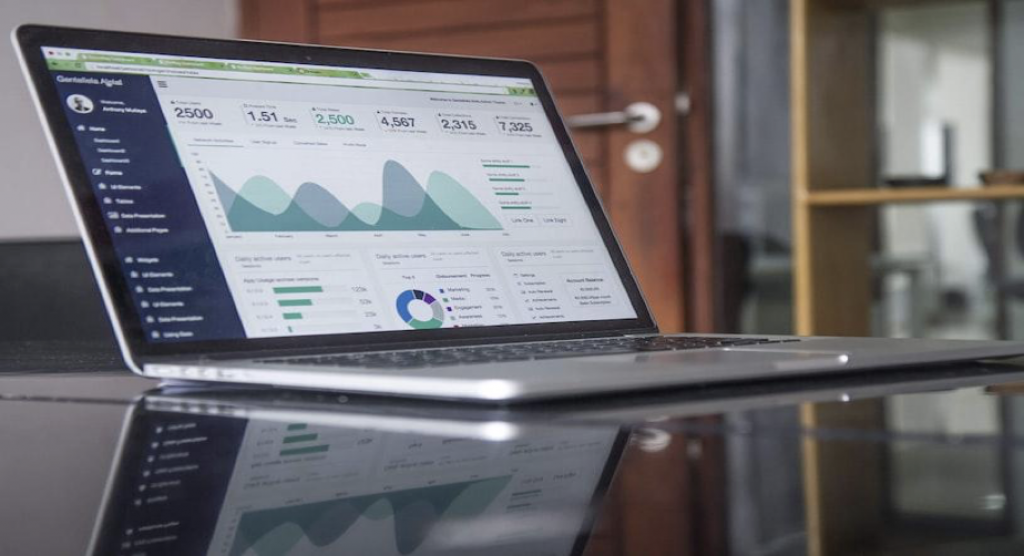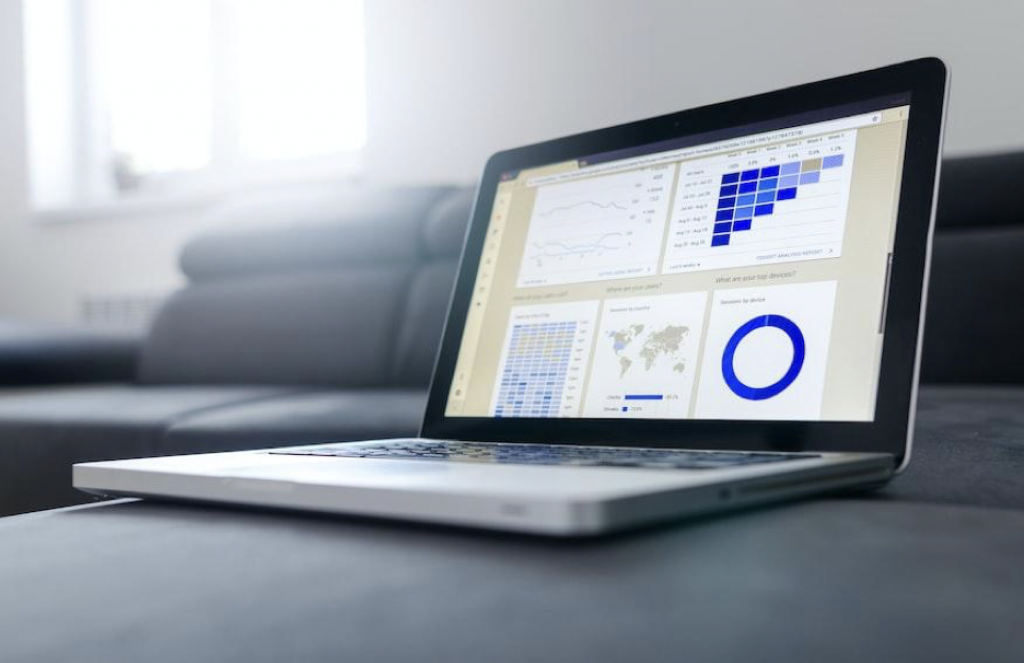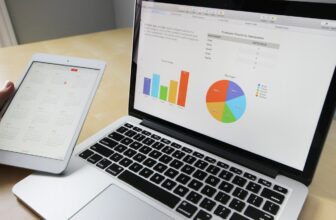Creating a sales forecast is both a science and an art. It keeps your executives happy and your company healthy.
In this article, we will define sales forecasting, the value that a good sales forecast delivers to your company, factors that may affect your sales forecast, and the methods required to estimate future sales.
Definition of Sales Forecast
Sales forecasting is a process that allows a company to estimate future sales based on historical data and industry comparisons. Through sales forecasting, businesses can predict weekly, monthly, quarterly, and annual sales totals.
One of the main ways that a sales forecast may help your company is by forecasting sales revenues which enables it to allocate resources where they are most required and create data-driven growth and expansion plans.
Why Accurate Sales Forecasting Is Important

- Every business may improve decision-making with the help of a sales forecast. It aids in budgeting, risk management, and general business planning.
- Sales forecasting enables businesses to allocate resources properly for future growth while also managing cash flow.
- Sales forecasts assist sales teams in meeting their objectives by spotting early warning signs in their sales pipeline and course-correct before it’s too late.
- Businesses can effectively predict their short and long-term performance with the assistance of sales forecasting, which also helps them estimate their costs and income.
Benefits of Sales Forecasting

Without a doubt, sales forecasting is essential for every business. You can better manage your operations by appropriately forecasting. Here are five benefits of sales forecasting:
1. You can Set Better Goals
Sales forecasting is useful for managers and executives to set realistic goals. Your entire year’s strategy is based on your sales forecasts, and the insights they give can create the foundation for the company’s vision.
Sales managers should set realistic sales goals for their teams or for specific salespeople if they wish to expand their business.
2. Aligns Business Strategy and Outcomes
Using a sales forecast to align business strategies and results can provide guidance on where your company’s resources should be allocated most effectively.
For example, it can forecast when you should deploy resources to the distribution center or the materials departments. It may lead to higher product production because development teams can plan for busier quarters.
3. Efficient Production Planning
Production is a crucial component of a business because it mostly dictates how you fulfill client demands. A balance between supply and demand is necessary for a productive system.
Using sales forecasting, you may achieve this equilibrium.
The forecast will reveal how many sales you can expect in the near future. From this, you may calculate how much production you’ll need to do in order to meet the predicted figures.
By doing this, you can avoid instances in which you either oversupply and waste resources or undersupply and fail to satisfy your customers’ needs.
4. Better hiring
Sales forecasts are useful in employment decisions as well. For instance, if your sales forecast indicates a rise in demand, businesses should set an appropriate budget and focus their efforts on finding and securing the resources they need to meet that demand.
On the other hand, if sales are expected to drop, it may be appropriate to delay hiring plans and turn your focus to bringing in more business.
Factors That May Affect Your Sales Forecast

It’s vital to keep in mind that forecasting has limitations and that there are seemingly endless factors that could affect the accuracy.
The following are some of the most frequent factors affecting sales that should be taken into consideration when forecasting:
1. Competitive Changes
The modifications that the rivals make could catch the interest of the prospective customer and significantly impact the estimation.
For example, if a competitor unexpectedly uses a price reduction approach to promote a product, it may decrease your win rate. You must keep an eye on your rival and take quick action. If they lower the price, you’ll have to provide discounts to stay in the game.
2. Inflation Rate
Inflation is nearly always inevitable. It will impact the exchange rates of the currencies you use to conduct business. Depending on the region of the world where you will be conducting business, you might also have to deal with artificial inflation adjustments.
Since you have little control over inflation, your company’s predictions must be adjusted depending on what you may expect to happen. It is usually best to err on the side of caution in this situation.
3. Market Circumstances
Sales forecasts are impacted by current and expected changes in market size.
Accurate forecasting depends on having a thorough understanding of the market as a whole. You must monitor economic growth, changes in the number of businesses in your sector, or resource availability to stay on top.
4. Internal conditions
These factors include the pricing structure (some examples here), the marketing plan, the number of employees, the quality of the product, the financial distribution, etc. Changes in these aspects may result in an increase or decrease in sales, which will impact the forecast of your future revenue. The good news is that we have direct control over internal conditions.
For example, hiring a new sales manager may increase the number of deals. On the other side, the business can lose revenue if there aren’t enough workers in a particular department. You should consider all potential company changes and forecast sales based on the current development strategy to generate an appropriate forecast.
5 Sales Forecasting Methods and Examples

There are various techniques for predicting sales for your business, and a company will select one depending on its needs.
Most businesses use many sales forecasting techniques to get more projections. It can give you both the best and worst-case situations.
1. Length of Sales Cycle Forecasting
This method is forecasted using data on how long it takes a prospective customer to become a paying client.
For instance, if your sales representative has been working with a prospect for two months and the average sales cycle is four months, your rep has a 50% chance of closing the deal.
It’s wise to forecast using the length of the sales cycle because it’s fully objective and doesn’t rely on subjective data from your reps.
2. Intuitive Forecasting
The intuitive forecasting method requires confidence in your prospects’ opinions. The best person to ask whether the sale will go through or not is your salesman. There is no way to examine the statistics if the sales reps are overconfident and make inflated predictions.
For example, a sales representative evaluates their pipeline for the following month and decides the stage and deal for each of their accounts. Based on this data, they will predict that they will close x number of deals for x amount. That becomes the projected number for the month.
Since this strategy mainly relies on the subjectivity of the sales representative, so it is very challenging to estimate. However, this strategy may be helpful for new organizations or those that lack a huge amount of historical data.
3. Historical Forecasting
With historical forecasting, you take the past sales data for a specific period and predict that your sales will be equal to that or greater.
For example, you may be aware that your company typically grows at a 15% annual rate and that you closed $100k in new business last month. Thus, you would predict this month’s revenue to be $115,000.
This method is significantly more accurate, but it ignores other aspects that may have changed in the last year, such as the amount of sales reps you have or how your competitors are doing.
4. Pipeline Forecasting
This method is much more accurate but still depends on high-quality data. It examines each opportunity in your pipeline and performs an analysis based on various variables, such as deal stage, deal type, etc. This is a really advanced strategy, so it’s unlikely to work without the latest tools that can examine what’s in your pipeline.
For example, deals between $2,000 and $4,000 that are closed within the 90-day sales cycle have a high win rate for your sales representative. In that instance, any current open opportunities in the rep’s pipeline that meet those criteria would be forecasted as having a high likelihood of closing.
5. Multivariable Forecasting
A multivariable forecasting analysis may produce more accurate results than any of the prior techniques since it integrates various sales forecasting models for a range of factors that influence a company’s sales growth.
For example, two representatives are working on the same account. The first representative did a demo for a purchase worth $20,000
The forecasted amount is $5000 if there is a 25% possibility of the contract closing.
The forecasted amount is $5200 if the second rep has a smaller deal for $8,000 and a 65% likelihood of closing the deal.
The forecast’s total is $5,000 + $5,200 = $10,200.
Final Thoughts
As you can see, forecasting sales is critical in any modern sales company. It lets you recognize new trends, opportunities, threats, and course-correct in real time.
Just keep in mind that sales forecasting isn’t complex. Anyone can do it, and as an entrepreneur, you’re the most qualified to do it for your company because you know your customers and your market better than anyone else.
More Articles on This Subject
Here below, you can find a list of articles related to sales and sales forecasting:









